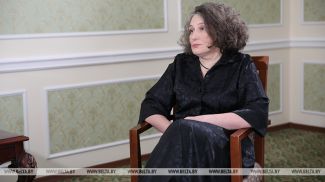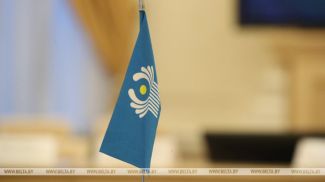MINSK, 29 August (BelTA) – The speculations surrounding the Belarusian-Russian strategic army exercise Zapad 2017 are hard to comprehend, BelTA learned from Belarusian First Deputy Defense Minister, Chief of the General Staff Oleg Belokonev on 29 August. Oleg Belokonev will supervise the exercise on behalf of the Belarusian side.
Oleg Belokonev remarked that preparations for the Zapad 2017 exercise proceed on the back of a complicated military and political situation in the region. NATO's frontline command centers have been deployed near the western borders of the Union State of Belarus and Russia. NATO exercises are held virtually one after another, including those that deploy troops in the immediate vicinity of the Belarusian border. Oleg Belokonev stated that the number of military exercises in the region has doubled in the last eight years while the number of troops involved has more than tripled. “This is why we fail to understand the mass media hype surrounding the Zapad 2017 exercise,” stressed the official. Oleg Belokonev reminded about NATO's multinational exercise Anaconda 2016, which was the largest one on record since the end of the Cold War. Representatives of 24 countries took part in that exercise. All the main parameters of NATO's Anaconda 2016 exercise in Poland exceeded the parameters of the Zapad 2017 exercise several times over. The number of military personnel involved in the Anaconda 2016 exercise exceeded that of the Zapad 2017 exercise by more than two times. The number of weapon systems and military hardware involved in the Anaconda 2016 exercise exceeded that of the Zapad 2017 exercise by nearly 4.5 times. The practices polished during the Anaconda 2016 exercise were clearly unfriendly, however, Belarus remains calm about it, stressed Oleg Belokonev.
In late September 2017 Poland is expected to once again host a massive multinational exercise of the NATO member states and partner states. The exercise will involve about 17,000 personnel from 12 countries as well as 53 combat tanks, 192 armored fighting vehicles, and over 30 helicopters. In the face of these numbers Belarus makes no accusations or reproaches about the aggressive nature of the NATO exercise, noted Oleg Belokonev. Instead Belarus treats the NATO exercise as part of the troops training routine. “This is why inadequate responses to our exercise are, at least, not entirely reasonable,” said the official.
The Belarusian-Russian strategic army exercise Zapad 2017 is a defensive one. It reaffirms Belarus' policy in favor of bolstering regional security and honoring the country's commitments as part of the Union State of Belarus and Russia. Despite the mass media hype surrounding the Zapad 2017 exercise Belarus without fail honors all the commitments as part of international and regional agreements on disarmament, trust- and security-enhancing measures within the framework of the United Nations Organization and the OSCE. Bearing these commitments in mind, Belarus officially notified the states parties to the 2011 Vienna Document about the forthcoming Zapad 2017 exercise back in late 2016.
BelTA reported earlier that the Belarusian-Russian strategic army exercise Zapad 2017 will take place in Belarus and in three exercise areas in Russia on 14-20 September. No other army exercises will be held in Belarus in this period. The concept of the Zapad 2017 exercise was approved by Belarus President Alexander Lukashenko on 20 March.

















